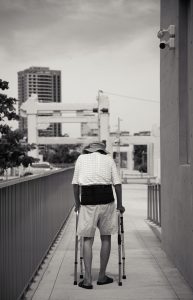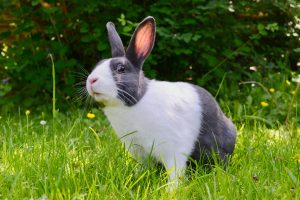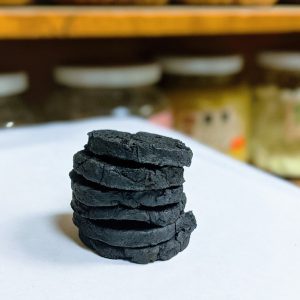Herbal Medicine
Sleep Supplements (for Temporary Use)

To non-insomniacs, insomnia is as foreign a concept as indigestion is to those of us with iron stomachs. The latter have experienced nausea maybe a few times in life, they’ve had food poisoning or diarrhea, so they know the feeling—but they have no idea what it’s like to be in a perpetual state of gastrointestinal vulnerability. To have to always be aware of what they’re eating or have a lesser capacity for the holiday indulgences that others seem to be able to “stomach” relatively easily.
Conversely, most non-insomniacs have experienced sleeplessness on at least one occasion. Having caffeine too late in the day, an exorbitant amount of life stressors on one’s mind, or just a random night of anxiety, feeling inexplicably wired in anticipation of a potentially exhausting day to come. However, they don’t know what it’s like for this to make up the majority of one’s nights, for it to become a vicious cycle of neuroses around sleep hygiene and schedule decisions, nor the cumulative effect of chronic insomnia versus a bad night here and there.
Insomnia is considered one of the most difficult pathologies to address, not just in Chinese Medicine, but in western medicine and most medical paradigms. There are many moving etiological parts, from the brain’s pineal gland and vagus nerve to adrenal hormones, parasympathetic function, and of course the “food stagnation” pattern. Anyone ever eat a huge meal late at night and sleep poorly? This might be a pile of pizza clogging up the vagus nerve’s pathway for sleep neurotransmitters to smoothly travel along.
While it is important to remain vigilant in uncovering the root cause and holistic pattern of any disease, symptom management, in my opinion, can be equally important in the interim. Diet, sleep, and exercise are a trifecta agreed upon across all medical paradigms, as the holy grail to avoiding disease, so when one is compromised it should be addressed with urgency.
If breathing exercises work for you it generally indicates a less severe root pattern, also offering an opportunity to hone your meditation skills. I recommend either the 478 Breath or this silent kundalini yoga mantra.
If yours is more of a “blood deficient yang ming” kind of insomnia (think waking in the middle of the night or early in the morning and feeling wide awake, but somehow still exhausted), breathing alone will likely not be enough. This is a difficult pattern to treat, albeit do-able, but during the trial-and-error healing process I’d recommend any of the following supplements:
DOC PARSLEY is a melatonin blend, not advisable to use long-term but according to my most respected teachers it is relatively helpful and harmless off and on for brief interims.
SHIZANDRA DREAMS combines western and eastern herbs, the former of which includes valerian root. Again, we do not believe any medications should be taken in perpetuity, but this is okay to use briefly while getting your life and/or brain back to normal operating mode.
Finally, and I have mentors who’d smack me for writing this, but SUAN ZAO REN TANG is a generic formula that has personally helped me in the past. It includes poria mushroom, licorice, chuanxiong root, anemarrhenae root, and zizyphi seed. Its imperfections lie in the fact that zizyphi seed is nourishing, hence sticky, so if the patient bears a great deal of systemic damp heat it may aggravate this. Also, anemarrhenae is very cooling, so if the patient is already cold they might become colder. Western medicine has the luxury of not having to consider such factors. “Some people experience side effects. Some don’t (shoulder shrug).”
Please consult me if you’d like to order any of these or once you begin taking them, so we can execute intelligently, in spite of the reductionist medical recommendations I’ve just shared.
The Mutual Interdependence of Yin and Yang in a Toddler

Putting our baby, Peyton, to sleep, whether for a nap or for the night, has never been easy… especially for me, who lacks my wife’s physiological advantage to match what is probably her more calming energy and cooling constitution. Thus far we suspect, for better or worse, that our daughter’s constitution is more similar to mine.
There was an entire three-month period, somewhere between her 10th and 13th months if I remember correctly, that no matter what I tried failed—she wouldn’t sleep for me—and it drove me insane with all of the typically childish new parent emotional extremes: Frustration, exhaustion, resentment, etc.
I tried bouncing her, rocking her, petting her on the upper back, petting her on the lower back, doing more of a tushy pat than a pet (supposedly the key for our babysitter), and feeding her until she finally and predictably refused the bottle completely. Almost nothing worked during this interim, until one day I came up with a different idea.
One day in mid-tantrum, instead of trying to gently calm her I decided to cradle and hold her tight on my lap, restraining her from squirming away from me while screaming and crying with that rageful fatigue seemingly unique to babies. I squeezed her close so she knew I was there, so she knew that I cared, but at the same time I wouldn’t let her go—at least not for a few minutes. I’d hum into her frontal lobe, gently kissing her forehead, to contrast my fully grown man arms locked around this poor 25-pound angel when all she wanted was off my lap. When I finally let her go she’d collapse face down on the bed next to me, and I’d return to yin. I’d lay next to her petting her back and she’d fall asleep almost instantly. It was the perfect depiction of the mutually interdependent relationship between yin and yang.
In order to enter yin, to fully relax and go to sleep, Peyton had internal yang fire that first needed to release. Maybe we didn’t get quite enough out running around on the playground, or maybe as I prefer to think, her fire was so fueled by the excitement of being with Daddy, that my task was a much taller one than the likes of the babysitter. In any case, she was dealing with a very normal amount of hyperactive central nervous activity that had to vent, and by restraining her physical movements while allowing her to vocalize frustration, she was finally able to viscerally experience the fatigue subdued beneath her heat.
As adults we are no different. If we do not nourish our body’s yang, our yin will eventually suffer, and vice versa. A lack of movement or physical exertion over time may engender an inability to calm down, which can manifest in any way from insomnia to anxiety, irritability, or systemic dryness, as our healthy metabolic fluids dry out due to systemic inflammatory heat.
Conversely, we must nourish our body’s yin in order to experience healthy yang energy long term. Yin is best represented in life’s pauses, as many yoga teachers instruct us to be mindful of the moments between breaths, the end of our exhales and beginning of inhales. Taking a pause while eating our meals, pauses in the middle of each day, periodic vacations, lunch breaks, or 15 minutes to simply lie down and close your eyes. Every form of stoppage will nourish our yin, which will then logically allow us to fully experience our healthiest yang.
After a long nap, a stoppage, Peyton’s energy levels return to infinite, and our cycle continues. I take her to the playground, chase her up and down slides, play full-contact swings, and sometimes just let her run around the periphery of the park. My own yin is as under-nourished as it’s ever been, so I must compensate in other places. Going to sleep earlier, stealing naps whenever possible, eating a bit more animal protein, and ensuring to stay hydrated, as fluids are yin. Fortunately, we’ve since passed the phase of restraint strategy while segueing into her apparently close to complete understanding of language. Now I just do the petting and patting, cuddling next to her, and whisper to her: “I promise I’ll be here when you wake up.” Lately that’s what works best. But check back with me next month. Surely, it’ll be something different.
The “Unresolved Exterior Pathogen”

I think one of my favorite concepts in Chinese Medicine is that of the “unresolved exterior pathogen.” What does it mean? When we catch a cold, whether bacterial or viral, most cases should be vented, sweated out, while we rest as much as possible and consume warm foods, such as the classic chicken soup to support our “wei qi,” or immunological cellular energy.
Obviously most modern people do not do this. We take over-the-counter cough suppressants, congestion suppressants, anti-pyretics, and every other suppressant to make us feel as comfortable as possible until the cold resolves… or at least appears to.
This is a totally understandable mistake. First of all, most people don’t know that Chinese Medicine can treat the common cold (along with nearly everything else under the sun), and even if they did herbalists and herbal medicine are not readily available to most.
From a Chinese Medical perspective when a cold is suppressed it gets pushed deeper into the body, from the “wei qi” or immunological layer, to the organs and metabolic layer. Anyone have digestive issues since having Covid-19? This is an “unresolved exterior.”
More common symptoms of unresolved pathogens include rheumatological, dermatological, or orthopedic; autoimmune joint pain being the most self-explanatory, which makes orthopedics not far behind it. Lingering “dampness,” residual plaques or mucus from an exterior pathogen go latent, and if we’re lucky enough that they don’t create the kind of molecular mimicry to over-activate our immune system they may lodge into our muscles, tendons, and ligaments. While neck and back pain during a common cold are well-known, pay more attention to such symptoms that linger in their wake. It usually indicates fluids that should have been sweated out are trapped wherever we happen to be orthopedically most vulnerable.
Thankfully, we’ve gotten to a point where few people are any longer terrified or paralyzed by Covid-19. Most of us are more or less going about our lives taking varying precautions—this doesn’t mean we cannot at the same time respect our opponent.
After I had Covid I continued to consult and get treated by mentors for at least one month after symptoms resolved, with the obvious intention of prevention and full resolution, not just from a biomedical standpoint, but from a more neurotic, perfectionist Chinese Medical assessment. I wanted to ensure that my tongue looked like my tongue again—also that we took steps to avoid any of my own constitutional proclivities from rearing their heads as a result of any unresolved inflammation.
While going through Chinese Medical school it was fascinating to think that my eczema and ski conditions that I’d had all my life may have been a result of an improperly treated cold I had as a baby. Or to view my low back or knee pain as not something relegated exclusively to the orthopedic surface and/or old athletic injuries, but connected to my systemic inflammation. I beg your pardon for my broken record tendency in refutal of one my greatest pet peeves:
“Holistic” does not mean everything alternative, “New Agey,” nor related to spa treatments, nor gentle or weaker than biomedicine. It means analyzing all symptoms and systems as interconnected and the incredibly more challenging task of treating accordingly.
To schedule a FREE INITIAL CONSULTATION CLICK HERE
Happy New Year of the Water Rabbit!

This week marked the first of the lunar new year. To contrast last year’s more rambunctious energy of the tiger, we now enter the year of the “Yin Water Rabbit,” which bodes to be gentler, more harmonious, healing and peaceful.
The rabbit is known to be resourceful, which is why the Chinese believe the year of the rabbit to be financially promising. The rabbit is equally thought of as relatively sensitive, diplomatic, and homemaking, which makes 2023 a potentially great year for family affairs of all kinds, whether baby-making, baby-raising, purchasing homes, or staying at home more frequently to nurture loved ones. The fact that the element in this rabbit year is of yin water only further solidifies these recommendations or themes.
With that being said, it is always important to recognize that the qualities that create our own strengths are generally at the root of our challenges or weaknesses as well. People with a lot of energy or charisma are often poor sleepers, more irritable, and temperamental, all of which a result of their internal heat; while those who are calmer and more laid back have a tendency to laziness and procrastination. They tend to be the colder body/mind types.
Because the yin water rabbit is so naturally peaceful and forgiving, its year’s potential side effects worth being mindful of mitigating are depression and reclusiveness. Of course, we should take advantage of the rabbit’s strengths, of looking inward, meditation practices, and confronting our fears and feelings. At the same time, while immersed in yin water it is important to periodically generate fire, our yang energy to balance this energy around us.
Basic ways to do this are taking trips whenever possible, connecting with community as much as possible, and exercising to raise your body temperature, provided that exercise isn’t something already being done to excess. Regularly partaking in such activities should nicely balance the Yin Water Rabbit’s tendency to melancholy and/or anxiety this year.
For my part, with a yin water year beginning in the middle of winter (as the lunar year always does), I have been using a great deal more moxibustion in the clinic lately. The mugwort herb we burn on certain acupuncture points has a warming, healthy vasodilatory effect, which can be wonderful at preventing pathogenic yin, or local “dampness” in the body. While it’s fine to use in the summer, I feel logically more drawn to moxibustion in the cold of January, especially now in the days of the rabbit.
Red Meat and Foxglove Root as Medicine

In my last weekend roundtable of case discussions with my group in Beijing, my teacher reminded us of the importance of sometimes inquiring how patients feel while digesting red meat. Whether they feel good, bloated, constipated, or otherwise, can inform us of the strength of the microbiome.
Red meat, like all foods in Chinese Medicine, is medicinal, but like any medicinal it is not perfect. Although there is no better food for building and nourishing the blood and body fluids, plus warming the overall gut, red meat is obviously a heavy material, more difficult to digest than most foods, and therefore should be dosed and prescribed mindfully.
This reminded me precisely of how we think of “shu di huang,” a Chinese herbal medicinal that is better known in the west as foxglove root. Foxglove root is one of the most important herbs in our pharmacopeia for building and nourishing blood—especially when the lack of blood has led to internal heat in the body.
The problem is if you look at raw foxglove root it looks like a stale old chocolate brownie. It is dense, heavy, and sticky, invaluable to certain patient patterns, but also difficult to digest; we are continuously reminded to not prescribe unless and until patients’ microbiome functionality is fully, or close to fully restored. It’s a rather simple connection: If someone feels bloated or distended after eating red meat they cannot yet handle foxglove root. If we make the mistake of prescribing it, they’ll likely come back complaining of worse digestive issues and no improvement of symptoms. We always must first rectify the gut before rebuilding blood. This is Chinese herbal medicine in a nutshell—or a stale brownie if you will.
We are now entering the time of year where red meat is most advisable, utilizing its sweet warming properties to balance the bitter cold of winter, as well as its fatty lubrication to counteract the dryness most evidenced on our skin or chapped lips.
However, it is important to dose properly—also whenever possible to intelligently design the remainder of each “formula,” which is to say plate of food. Since something like salmon is relatively easy to digest it can be consumed alongside more carbs and/or potatoes. On the other hand, red meat is better harmonized by cooked greens and light vegetables to aid in its downward movement. Beer and white bread will obviously have the opposite effect.
By all means take the following Eastern recommendations with a grain of salt (or pinch of sea salt atop your filet mignon this holiday season):
- Ideally, red meat should make up the smallest portion of food on your plate. When it doesn’t it’s important the following day to drink plenty of mint, barley, and/or ginger tea to help with its processing and digestion.
- Red meat might be consumed about once a week in summer months and three times a week in winter months.
- Red meat should be consumed more by people over the age of 60, women on their menses, and people with relatively “cold constitutions,” that tend more to anemia, hypotension, hypothyroid, and almost “hypo” anything.”
- People with warmer body types with tendencies to “hyper” conditions, or dealing with serious hemorrhoids or intestinal inflammation should mostly avoid red meat until said symptoms are resolved.
- Red meat can be consumed with reckless abandon by any woman less than six months post-partum and almost any woman trying to get pregnant. If it bothers your stomach I would advise starting with very tiny portions and gradually increasing the dose, as unlike foxglove root, red meat should strengthen the microbiome enough to tolerate more of it.
If you are a meat-eater and have never been to Quality Meats in Manhattan I’d highly recommend! My father always preferred The Palm II on 2nd Avenue, but I believe he was guilty of nostalgic attachment, as it was located a few blocks from his office of several decades.


